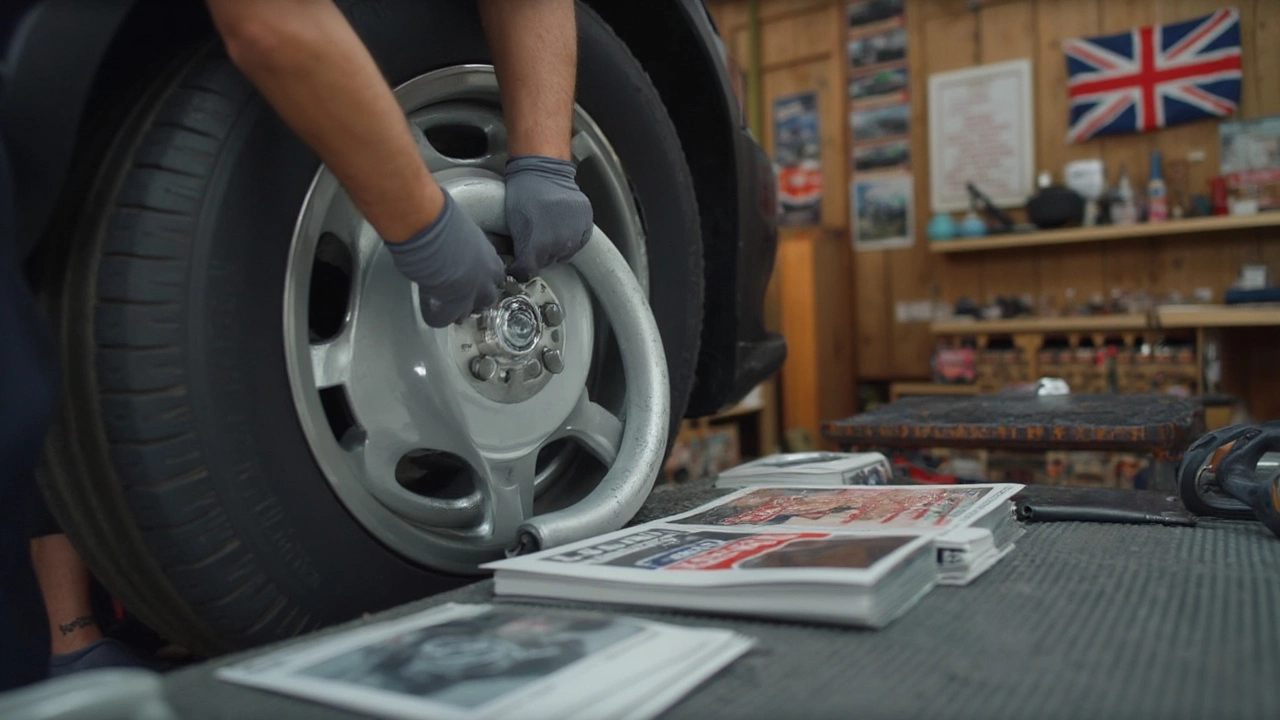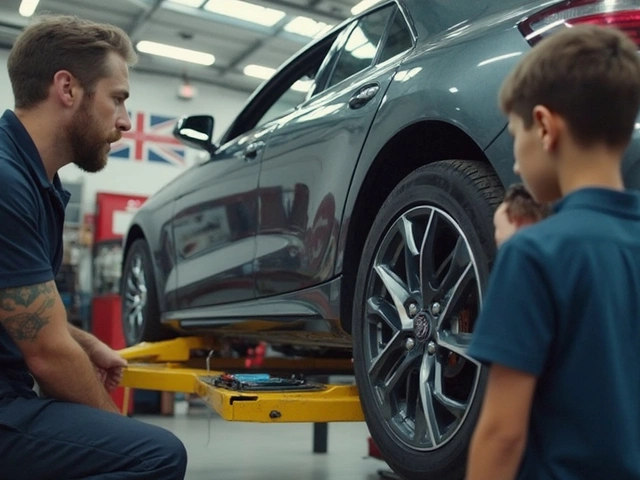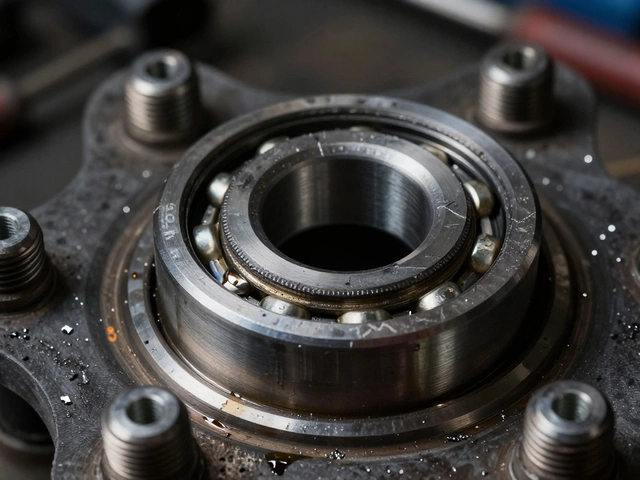Imagine this: You spot a truck with wheels sticking out, looking tough and ready to take on anything. Odds are, those wheels are rocking spacers—possibly even the bold 2-inch kind. But here’s the thing, rumors fly everywhere about whether they’re a shortcut to disaster or just another personal touch for your car.
If you’re tempted by the idea of 2 inch wheel spacers, let’s get practical. The safety question isn’t as simple as yes or no—it's all about how you use them. Are you picking cheap, no-name parts off some sketchy website? Are you skipping the torque wrench and winging the install? That’s where problems usually start.
But if you go with quality spacers—think forged aluminum, hub-centric design, and matching stud sizes—and install them by the book, they can be just as safe as your stock setup. I’ve seen plenty of daily drivers, off-road rigs, and even track builds running big spacers without a single issue, year after year. The real danger shows up when the spacers are poorly made, installed wrong, or not checked over time.
- What Wheel Spacers Actually Do
- Why Go For 2 Inch Spacers?
- Are They Safe or Not?
- Common Mistakes That Make Spacers Unsafe
- How To Install Spacers The Right Way
- How To Spot Trouble Early
What Wheel Spacers Actually Do
You’ve probably heard talk about 2 inch wheel spacers, but let’s get down to what they actually do. In plain terms, a wheel spacer is a chunk of metal that fits between your vehicle’s hub and the wheel. It pushes the wheel out farther from the hub, making your car’s track wider. That’s the simple part, but there’s a bit more to it than just the look.
Spacing the wheels out changes a couple of important things:
- Stance: Your car or truck will look wider and meaner. This is why a lot of people do it, honestly—it gives your ride a custom, more aggressive style.
- Clearance: Running into brake caliper clearance problems with new wheels? Or those fat tires rubbing your control arms or fenders? Spacers can help solve these fitment headaches.
- Handling: A wider track can mean better cornering stability because the car’s center of gravity is spread out more. But pushing things too far can stress suspension or steering parts if you’re not careful.
There are two main types of wheel spacers: hub-centric and lug-centric. Hub-centric spacers center themselves perfectly using your vehicle’s hub, making them more stable—these are what you want for safety. Lug-centric spacers center themselves based on the lug nuts (not ideal for heavier or high-performance vehicles).
| Type | Best For | Main Advantage |
|---|---|---|
| Hub-Centric | Daily drivers, off-road, heavy vehicles | Better stability and fit |
| Lug-Centric | Show cars, light use | Easier install, but less secure |
The main thing to remember is that wheel spacer safety comes down to using the right type, getting the fit spot-on, and sticking to quality materials. When done right, spacers help with both form and function. But slap on the wrong ones, and problems start to pop up fast.
Why Go For 2 Inch Spacers?
There are a few big reasons folks pick 2 inch wheel spacers over something smaller. The most obvious one: it makes your ride look meaner, and that wider stance can totally transform the whole vibe of your truck, Jeep, or SUV. But it’s not just for style points—there’s legit function, too.
- Clearing Bigger Tires: A lot of people swap in bigger, chunkier tires when they hit trails or just want a beefy setup. Without spacers, those tires rub the inside fenders or suspension parts. 2 inch wheel spacers push them out just enough so you get full clearance.
- Stability and Handling: Widening your track adds more stability, especially with taller or top-heavy vehicles. If you take corners fast or hit rough roads, you’ll notice less body roll. Some off-roaders swear a wider track helps dig into ruts and sidehill slopes with more confidence.
- Custom Wheel Fitment: Maybe you found your dream wheels but the offset is all wrong. Instead of tracking down another set, spacers can fix the fitment without breaking the bank. This is pretty common among people piecing together unique builds or running aftermarket brake setups that eat up extra space.
It’s worth mentioning that a 2 inch spacer is considered on the wider side. So, while it gives more room and that bold look, it also sticks the wheel out further than what your fenders were designed for. Double check your local laws—there are places where wheels sticking out past the fenders get you a ticket.
| Reason | Practical Benefit |
|---|---|
| Bigger Tires | No rubbing during turns or flex |
| Wider Stance | Improved stability, tougher look |
| Offset Correction | Lets you use wheels with the wrong offset |
| Clearing Upgrades | Room for bigger brakes and suspension parts |
Bottom line: If your goal is more tire clearance, a steady ride, or a fresh look, 2 inch wheel spacers can do the trick—just be smart about picking quality parts and keep an eye on the fit.
Are They Safe or Not?
Here’s where the debate gets real: are 2 inch wheel spacers actually safe, or is it just a matter of time before something goes wrong? It depends on a few key things—mainly how you choose, install, and maintain them.
If we’re talking about quality spacers, most experts agree they don’t pose extra danger when used properly. Brands like Bora, Spidertrax, and H&R have made wheel spacers that meet industry safety standards (forged aluminum, hub-centric fit). Some manufacturers rate their spacers up to 160,000 psi tensile strength, which is stronger than most factory wheel hubs. That’s not just marketing talk—actual lab testing backs it up.
But here's something you should know: putting on 2 inch wheel spacers does change a few things about your vehicle's geometry. You'll push the wheels further out, which can increase leverage on wheel bearings and suspension parts. Over time, this might speed up wear if you’re constantly carrying heavy loads or doing hardcore off-roading.
What about road safety? In 2023, a survey of vehicle failures in the US found that less than 0.1% of crashes involving aftermarket wheels could be traced back to spacers, and in almost all those cases, it was because of poor installation or super cheap hardware. When people use quality parts and actually re-torque their lugs regularly, issues almost disappear. Have a look at this quick comparison:
| Spacer Type | Reported Issues (per 1000 installs) |
|---|---|
| Quality, hub-centric, proper install | 2 |
| Cheap, generic, poor install | 30+ |
One last thing: not every car should rock 2 inch wheel spacers. On compact cars, they might stick the wheels out too far, which isn’t just a style clash but can stress your hubs. Trucks and SUVs? They have beefier parts and usually handle two inches much better.
If you’re smart about the brand, double-check your install, and make it a habit to torque your wheels after a few hundred miles, spacers can be just as safe as your original setup. It’s all about playing it smart, not just looking cool.

Common Mistakes That Make Spacers Unsafe
Installing 2 inch wheel spacers without thinking things through can mess up your ride’s safety. A lot of the horror stories you hear come down to someone skipping steps or using the wrong parts. Here’s what really gets people in trouble:
- Buying cheap, generic spacers: Bargain spacers made with sketchy metal or loose manufacturing tolerances are a recipe for disaster. These are more likely to crack, warp, or just plain fail. Stick with reputable brands that use forged aluminum and have solid online reviews.
- Going with non-hub-centric spacers: If your spacers aren’t hub-centric, the weight of the car sits on the studs instead of the hub. This puts extra strain on your wheel studs and can lead to sheared bolts or wobbly wheels. Always match the hub bore size to your car.
- Skipping the torque wrench: Just cranking down bolts by feel is a classic mistake. Wheel spacer bolts need to be torqued to the exact spec. Too loose, and the spacer can shake. Too tight, and you risk snapping a stud.
- Not using thread locker: Wheel spacer bolts can work loose over thousands of miles. A dab of thread locker helps keep everything tight for the long haul.
- Ignoring regular checks: Even with a good install, not checking your spacers and lug nuts after driving 50-100 miles (and then now and then) increases your risk. Stuff does work itself loose, especially after rough roads or heavy off-roading.
- Mixing up stud lengths: With 2 inch wheel spacers, you need longer wheel studs or stud extensions. If your stock studs don't reach through enough for full thread engagement, you’re risking failure. Make sure the lug nut gets at least seven full turns onto the stud—anything less isn't enough.
Here’s a quick look at the comparison between good and dangerous spacer habits:
| Safe Practice | Unsafe Practice |
|---|---|
| Forged, hub-centric spacers from reputable brands | Cast, cheap, or universal-fit spacers |
| Proper torque spec with a torque wrench | Hand-tightened or overtightened bolts |
| Thread locker on bolts | No thread locker used |
| Regular torque checks (after install and over time) | No follow-up checks |
| Long studs with full nut engagement | Short studs, not enough threads engaged |
A lot of wheel spacer safety stories come down to human error, not the spacer itself. Taking a shortcut can mean a lot more than a noisy ride—it’s your wheels at stake. Stick to these tips, and spacers can be a smart upgrade, not a safety gamble.
How To Install Spacers The Right Way
Getting 2 inch wheel spacers on your ride isn’t rocket science, but you do need to follow the right steps. Mess up here, and you risk way more than bad looks—a busted wheel at speed is never fun. Here’s how to make sure your install is safe, solid, and long-lasting.
- Choose the Right Spacers: Go with hub-centric spacers, not lug-centric ones. Hub-centric spacers line up perfectly and reduce vibration. Stay away from cheap, oddly light spacers—stick with forged aluminum from trusted brands. Double check that the bolt pattern and center bore match your wheels and your vehicle.
- Inspect Everything First: Look at your studs, hubs, and wheels for rust, cracks, or stripped threads. Fix those problems before you slap on new spacers. Clean all contact surfaces—dirt or rust can stop the spacer from sitting flush, which can make your wheels wobble.
- Tighten It Right: Use a torque wrench and follow your vehicle’s factory spec for wheel lugs. Don’t go by “feel.” Correct torque is usually between 80-110 ft-lbs, but check your owner’s manual just to be sure. Tighten in a star (criss-cross) pattern to keep the pressure even. If your spacers have their own nuts or bolts, torque those first, then your wheel lugs.
- Use Thread Locker: A dab of blue Loctite on the spacer’s studs/nuts keeps vibration from backing them out over time. Avoid red Loctite—too intense, and you’ll never get it off without a fight.
- Re-Torque After Driving: After the first 50-100 miles, re-check your wheel lugs and spacer nuts. Sometimes bolts settle in after a little use. Do this again every time you rotate tires or after any hard off-roading.
Here’s a quick table to sum up some key numbers for common cars and trucks when using wheel spacers:
| Vehicle Type | Common Lug Torque (ft-lbs) | Stud Size | Spacer Thickness (in) |
|---|---|---|---|
| Mid-size sedan | 80-95 | M12 x 1.5 | 2.0 |
| Half-ton truck | 100-140 | 1/2"-20 | 2.0 |
| Jeep Wrangler | 95-115 | 1/2"-20 | 2.0 |
A few more tips: Never use an impact gun for final tightening. If something doesn’t fit easily, don’t force it—stop and figure out why. And keep an eye out for any fresh noises or new vibrations the first days after install. That’s your signal to double-check everything or get it checked by a pro.
How To Spot Trouble Early
It’s easy to slap on 2 inch wheel spacers and forget about them, but that’s a fast track to trouble. Catching problems early means way less risk for your ride, your wallet, and your safety. Here’s what you should really keep an eye on.
- Check Torque Often: The studs and nuts can loosen over time, especially right after installation. It’s smart to re-torque after 50 miles, and then every few thousand miles. If you hear any weird clicking or feel vibration, check your wheel spacer hardware right away.
- Look For Gaps: The spacer should sit flush against the hub and wheel. If you see a gap or the spacer doesn’t look straight, take things apart and investigate. Uneven mounting is a top cause of vibration and wobble.
- Inspect For Cracks: Every oil change, give those spacers a look. Any hairline cracks, stripped threads, or warping mean it’s time to swap them out. Stress from off-roading or hard cornering can show up as tiny fractures.
- Watch Your Tires: If you spot unusual tire wear—especially on the inside or outside edges—your alignment may be off or there could be an issue with the spacers. Get an alignment and inspect your parts.
- Feel For Vibration: If your steering wheel starts shaking, or there’s a vibration at certain speeds that wasn’t there before, it’s a big red flag. Poor-fitting spacers or loose hardware are common culprits.
Don't ignore warning lights either. A change in handling or weird noises means get under the car ASAP. Most issues with car upgrades like spacers show up early, so regular checks matter way more than you’d think.
| Common Spacer Issues | What To Look/Listen For |
|---|---|
| Loose Spacer or Lugs | Clicking sounds, vibration, or visible movement |
| Cracked Spacer | Hairline splits, chipping, or distortion in metal |
| Tire Wear | Uneven tread pattern, excessive wear on one side |
| Spacer Not Flush | Gap between hub/spacer or wheel/spacer |
A quick 5-minute check every oil change can save you hours in the shop—and way bigger bills. Being hands-on means you can keep wheel modifications safe and reliable, no drama.




